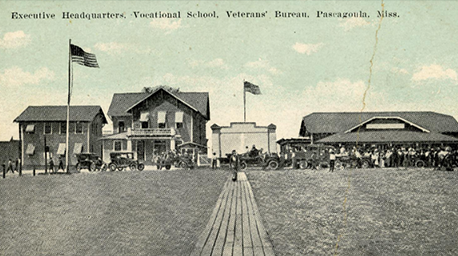
On January 3, 1946, President Harry Truman established the forerunner of today’s Veterans Health Administration when he signed Public Law 79-293, creating the Department of Medicine and Surgery within the Veterans Administration. The bill was the handiwork of three men: General Omar Bradley, the VA Administrator; Dr. Paul Hawley, his chief medical advisor; and Dr. Paul Magnuson, the chair of Northwestern’s Department of Orthopedics. This landmark legislation cemented sweeping changes to Veterans’ health care. The bill exempted medical personnel from the Civil Service hiring regulations, which allowed for doctors and nurses to be selected and appointed more quickly. Additionally, it linked the nation’s medical schools to the VA and initiated a program to construct new VA hospitals.
While the bill was popular with Congress and the public, a last-minute veto push from the U.S. Civil Service Commission threatened to derail its passage. Bradley and Hawley countered the Commission’s objections with their own high-pressure tactics to sway the president. Both threatened to resign on New Year’s Eve if Truman did not sign the legislation. The president chose to side with them and ignore the commission’s entreaties. When the bill became law, Dr. Hawley enthused: “With the signature of the Medical Department Act, our objective is clear, a medical service for the Veteran that is second to none in the world.” He added a promise: “[W]e shall build an outstanding service.”
Equipped with a $500 million budget, Bradley and Hawley set out to make good on that promise and reshape VA health care services. They launched many key initiatives, including the recruitment of 4,000 full-time VA physicians, nurses, technicians, and other medical personnel. They also established the VA Voluntary Service and the Veterans Canteen Service and hired the first 10 female physicians to care for women Veterans. These actions not only improved VA care and increased training opportunities for U.S. physicians but also set the stage for significant growth in VA’s medical research program.
View the Public Law 79-293 (PDF, 5 pages).
By Katie Rories
Historian, Veterans Health Administration
Share this story
Related Stories

History of VA in 100 Objects
Object 96: Postcard of Veterans Vocational School
In 1918, the government created the first nationwide vocational training system to help disabled Veterans acquire new occupational skills and find meaningful work. Over the next 10 years, more than 100,000 Veterans completed training programs in every field from agriculture and manufacturing to business and photography.

History of VA in 100 Objects
Object 95: 1840 Census of Pensioners
In a first, the 1840 census collected data on Veterans and widows receiving a pension from the federal government. The government published its findings in a stand-alone volume titled “A Census of Pensioners for Revolutionary or Military Services.”

History of VA in 100 Objects
Object 94: Southern Branch of the National Home
The Southern Branch of the National Home for Disabled Volunteer Soldiers opened in Hampton, Virginia, in late 1870. The circumstances surrounding the purchase of the property, however, prompted an investigation into the first president of the National Home’s Board of Managers, Benjamin Butler.



